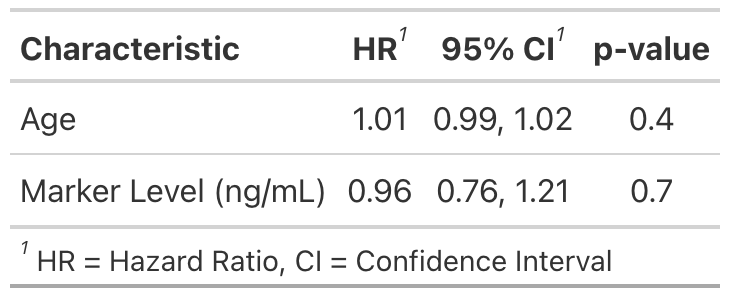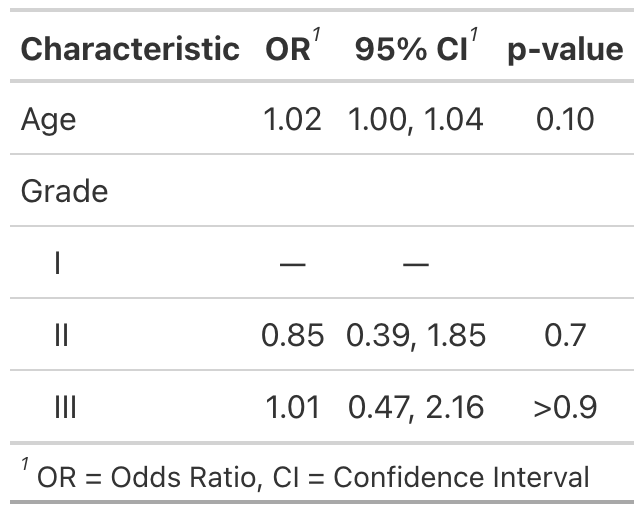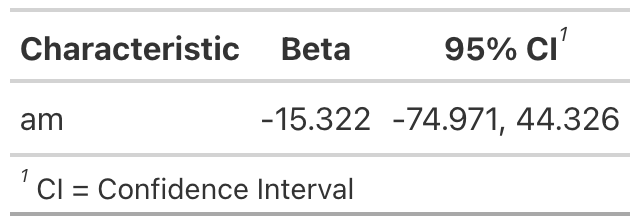- x
Regression model object
- ...
lifecycle::badge("experimental")Additional arguments passed to broom.helpers::tidy_plus_plus()
- label
List of formulas specifying variables labels,
e.g. list(age ~ "Age", stage ~ "Path T Stage")
- exponentiate
Logical indicating whether to exponentiate the
coefficient estimates. Default is FALSE.
- include
Variables to include in output. Input may be a vector of
quoted variable names, unquoted variable names, or tidyselect select helper
functions. Default is everything().
- show_single_row
By default categorical variables are printed on
multiple rows. If a variable is dichotomous (e.g. Yes/No) and you wish to print
the regression coefficient on a single row, include the variable name(s)
here--quoted and unquoted variable name accepted.
- conf.level
Must be strictly greater than 0 and less than 1.
Defaults to 0.95, which corresponds to a 95 percent confidence interval.
- intercept
Logical argument indicating whether to include the intercept
in the output. Default is FALSE
- estimate_fun
Function to round and format coefficient estimates.
Default is style_sigfig when the coefficients are not transformed, and
style_ratio when the coefficients have been exponentiated.
- pvalue_fun
Function to round and format p-values.
Default is style_pvalue.
The function must have a numeric vector input (the numeric, exact p-value),
and return a string that is the rounded/formatted p-value (e.g.
pvalue_fun = function(x) style_pvalue(x, digits = 2) or equivalently,
purrr::partial(style_pvalue, digits = 2)).
- tidy_fun
Option to specify a particular tidier function for the
model. Default is to use broom::tidy(), but if an error occurs
then tidying of the model is attempted with parameters::model_parameters(),
if installed.
- add_estimate_to_reference_rows
add a reference value. Default is FALSE
- conf.int
Logical indicating whether or not to include a confidence
interval in the output. Defaults to TRUE.


